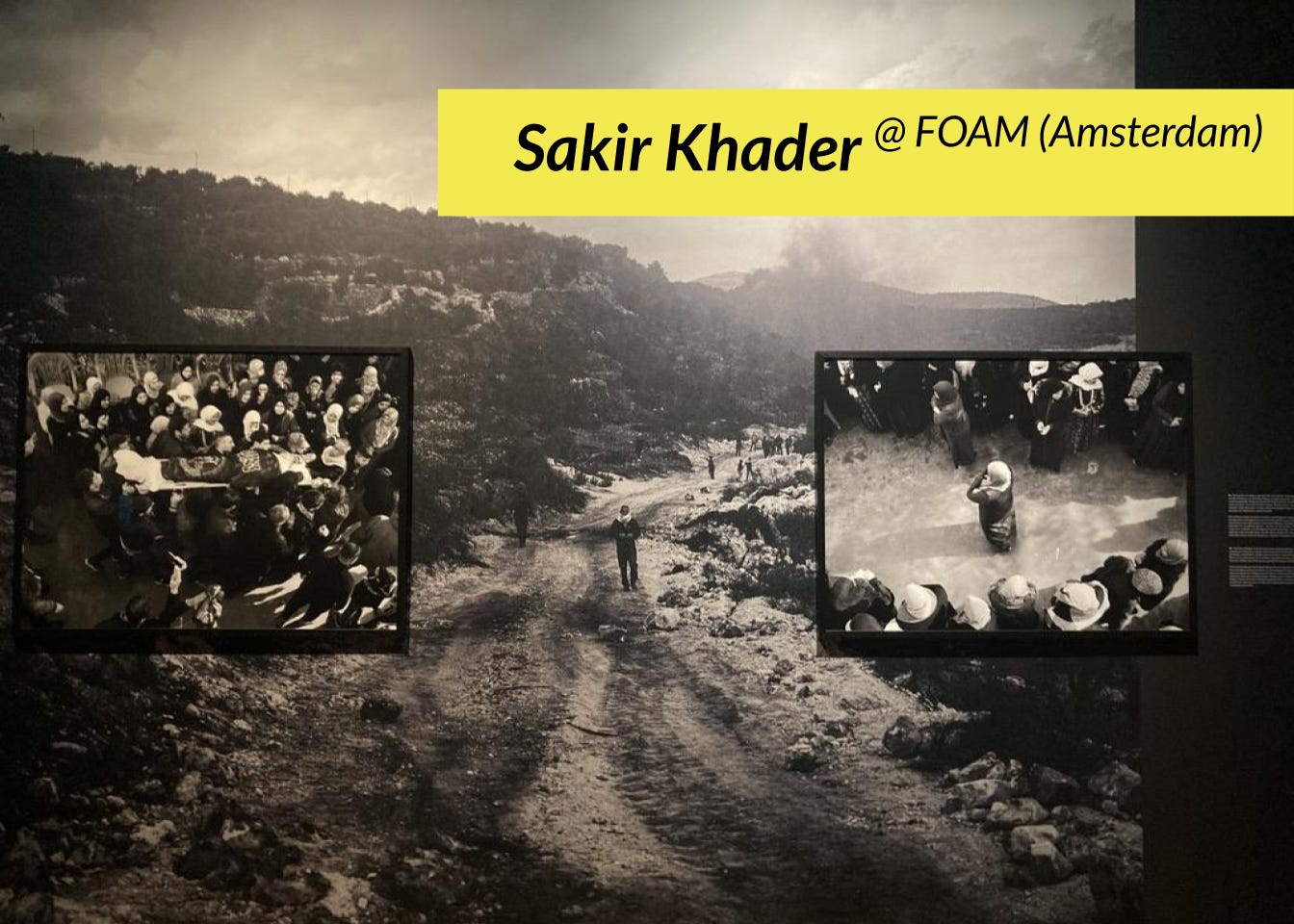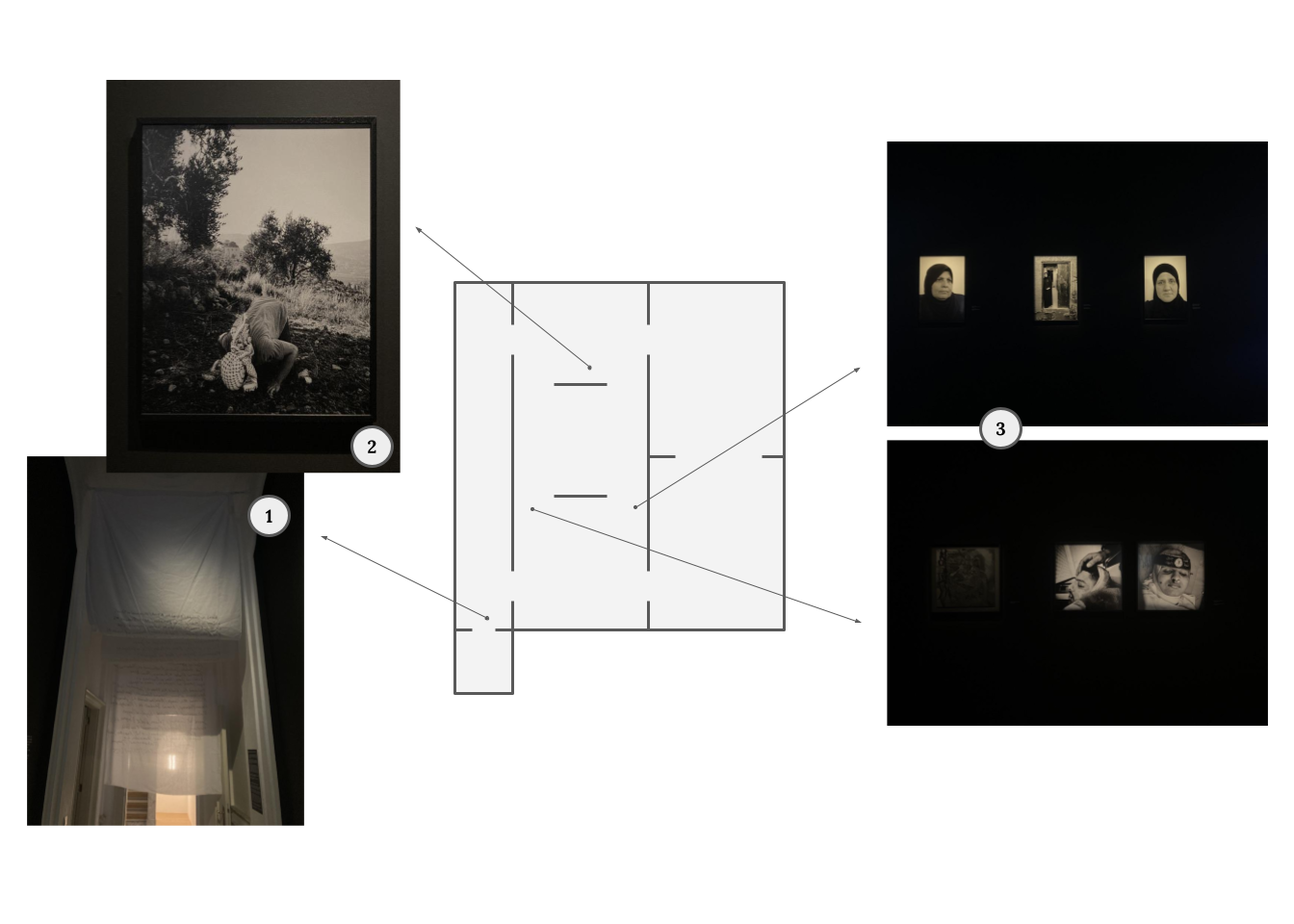Powerful Positioning
Photographer Sakir Khader's solo show at Foam proves that excellent exhibition making can come from something as simple as honouring the artist's work in the way you hang it.
The idea for this newsletter (/ ongoing archive) has been kicking around in my head for months, but it was experiencing Khader's exhibition Yawm al-Firak (Day of Separation) at Amsterdam's world-renowned photography museum Foam that finally moved me from thinking to typing.
I'm not a White Cube girl — I generally like to experience art in interesting and/or inspiring spaces with creative build-outs that help bring the work to life. Which is why I was especially struck by what the artist and curators behind this show managed to achieve with very limited technical intervention. The Sakir Khader exhibition was shown in one of FOAM's more unassuming galleries. In a narrow corridor and two long rooms, the walls were painted a deep, absorbing black; and most of the emotional impact came from how the work was positioned on the walls.
THE WORK
The starting point for any great curation is of course what's being curated itself and Khader's black and white portraiture is incredibly powerful seen in any context. The Palestinian-Dutch photographer focuses on the 'relation between life and death' and 'poetic sorrows of everyday life' in areas affected by conflict like Afghanistan, Turkey, and, of course, Palestine. Featured at FOAM this time were portraits of martyred young men, their mothers, and their funerals taken over the last four years in Jenin, a stronghold of Palestinian resistance in the West Bank that is the target of frequent Israeli raids and military operations.
THE WOW FACTORS
I'm not sure who exactly curated the show (Foam's curatorial team includes Mirjam Kooiman, Claartje van Dijk, and Aya Musa), but my sense is that the artist was very heavily involved. Every decision, from framing in the wall text to the flow of the show served to bolster the themes of farewell and departure in this specific, Palestinian context. Here are a few elements that really stood out to me:
(1) Emotional Entrance
Entering the exhibition required you to duck under a white cotton kafan (Islamic burial shroud) draped from the ceiling. Handwritten on the shroud was a list of journalists killed in Palestine — apparently the artist updated the exhibit on the occasion of every additional death. The simple, unstitched sheet prompted a physical pause to contemplate death, right at the boundary of the exhibition.
(2) Unapologetic Islam
As a Muslim, I was shocked (in a good way) at how open the exhibition was about the importance of Islam in Khader's work and in his photographic subjects' lives. It's sad but true that I've become used to images of prostrating muslims or inclusions of Islamic phrases being accompanied by explanations that over-explain, hedge, justify. Here, information about relevant Islamic customs and beliefs were sprinkled throughout the wall text poetically. For example:
In this scene, he performs sujud (prostration), the deepest bow in Islamic prayer. His head touches the earth—sacred ground—in a search for closeness with the divine. Amidst the olive trees of Palestine, he surrenders in total submission and humility, his body bowing toward the same earth treaded by prophets like Abraham, Jacob, and Joseph. It is a reminder: from the earth we came, and to the earth we shall return. In sujud, a believer is closest to Allah (God).
(3) Put Between Mothers & Sons
Finally, the powerful positioning and hanging of the work that I've been alluding to throughout this post. In every room, related works were hung opposite one another: portraits of grieving mothers faced portraits of their martyred sons; video of coffins being carried were set in dialogue with video of wailing mourners. This hanging enabled a viewing experience that magnified the emotional impact of the work. Your position was literally between a mother looking at her dead son's body, trapped within her gaze. A seemingly simple curatorial decision that will stay with me for a long time.
Sakir Khader: Yawm al-Firak (Day of Separation) was on view at Foam in Amsterdam between February and May 2025. If you missed the exhibition and would like to learn more about Sakir Khader’s work, I suggest following him on Instagram, scrolling through his photojournalism for the Volkskrant, or purchasing a copy of his limited-edition art book Dying to Exist.



